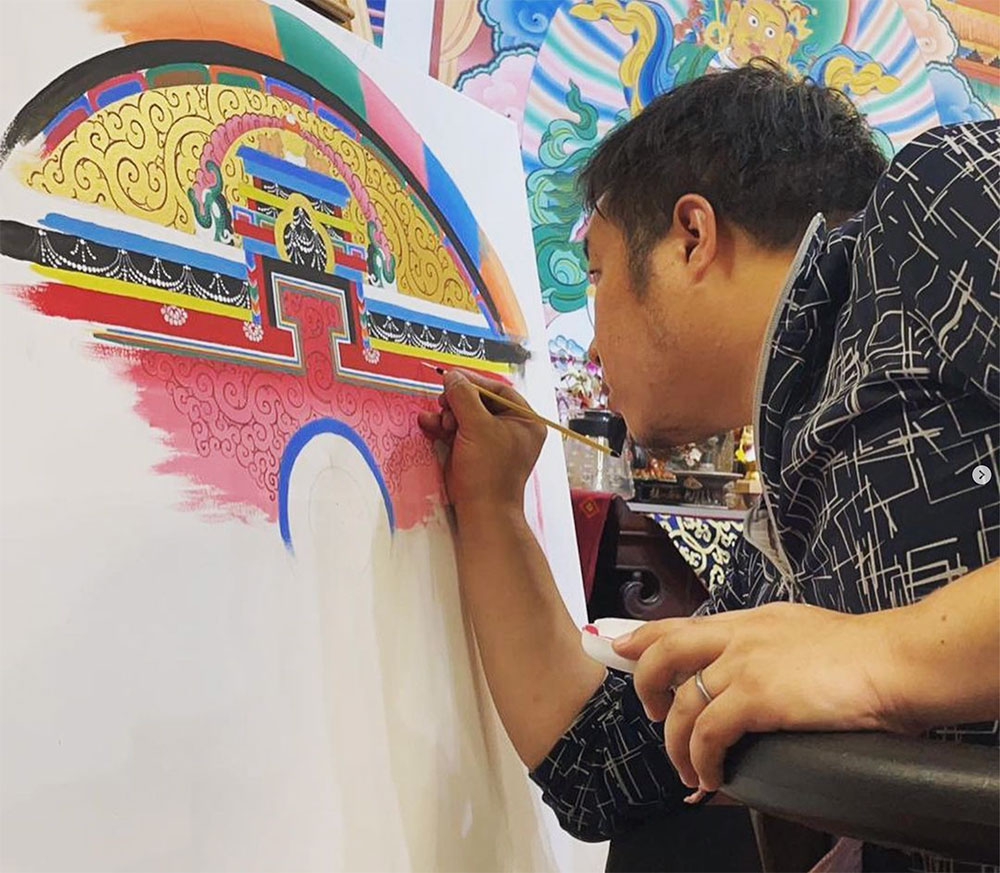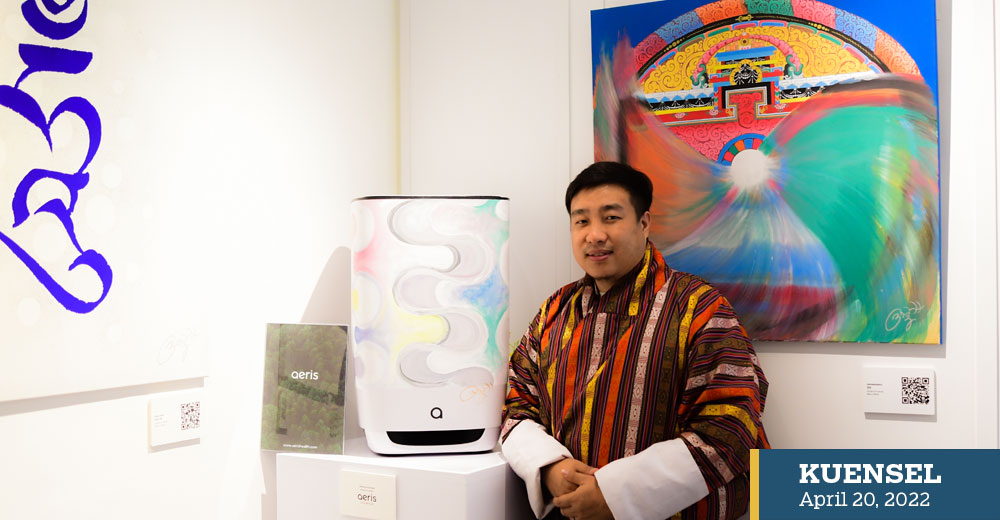Chhimi Dema
Nima Dorji, 32, from Lhuntse, is an artist residing and teaching art in Hong Kong. He works on traditional Bhutanese art and explores the contemporary art form.
Nima Dorji has been living in Hong Kong for 11 years with his wife, Cheuk Tak Lam. He has held three exhibitions in Hong Kong in the past three years on thangka, wall painting, and performance. An exhibition on Bhutanese thangka is due in May.
Nima did not have formal training in traditional Bhutanese visual art; he learned from his father, Thinley Norbu, a Lhadrip (traditional painter).
“I grew up in a house that was surrounded with colours and paints. I used to watch my father work and learned from him,” he said.
Nima moved to Hong Kong before he could get a marriage certificate. Nine years later, after he got the marriage certificate, he had already started working there and had started projects that he continues to work on today.
He said that if the pandemic situation improves, he plans to return to Bhutan. “I never thought about choosing a career but I had a conviction within that I will not leave art behind.”

The artist in Hong Kong
Establishing himself as an artist in Hong Kong was a challenge for him. The language barrier was one, and, initially, costly art supplies was another.
Today, he has sponsors supporting his works and students learning from him.
Anna Cheung, an art collector in Hong Kong, also a supporter of Nima’s works, said that traditional Bhutanese art is rare in Hong Kong.
“We have come across Tibetan thangka but not a Bhutanese thangka. Nima is the first Bhutanese artist working and teaching in Hong Kong,” she said.
Anna Cheung said that in Hong Kong or countries such as Taiwan, Japan, and Singapore, there is a hunger for traditional art and art that they have never seen before.
“Nima’s works could be a good opportunity for [Bhutanese traditional] art to reach Taiwan, Singapore, Europe, and other countries,” she said.
Nima Dorji and his sponsors are currently exploring digital art. The team is working on a collection of non-fungible tokens and plans to launch it soon.
The artist said that in Hong Kong, there are opportunities for a traditional artist to earn, through restoration of thangka or statues and even work on monastery restoration.
He said that the art market depends on the presence of collectors for traditional art, and the messages expressed on contemporary art.
Nima plans to collaborate with Bhutanese artists and promote traditional art internationally.
“Where we live wouldn’t matter so long we hold exhibitions or art shows in other countries,” he said.
Survival as an artist
Nima said that the survival of an artist depends on the skills he or she possesses. “If an artist thinks that they are struggling to survive, it could be because of their skill level.”
There are many talented Bhutanese artists, Nima said, and one mistake they tend to make is thinking that they have learned enough. “They have to keep pushing themselves, continue learning, to reach the standard of the international market.”


